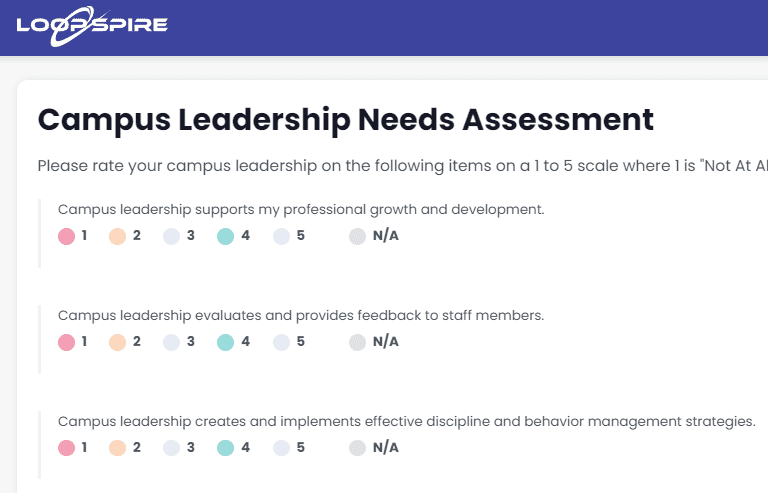In our previous post, we introduced the key components of effective professional development systems in K-12 education. In this post, we’ll focus on the first two components: needs assessments and goals and objectives.
Needs Assessments

Effective professional development systems begin with a needs assessment to identify the areas in which staff need support. This process should be ongoing and based on multiple sources of data, including feedback from staff, students, and community, student data, and progress reports on school or district goals.
One way to conduct a needs assessment is through surveys. For example, a survey could be administered to teachers to identify areas in which they feel they need support from administration or to assess their level of comfort and success with district or campus initiatives. Similarly, community surveys could be conducted to give a district a more holistic picture of its areas of strengths and weaknesses.
Observations can also be a valuable source of data for a needs assessment. School and district leaders can observe classrooms to identify areas in which teachers may need support or to assess the implementation of new strategies or initiatives. Similarly, district administration meetings could be observed to identify areas of improvement such as time management and efficiency.
Finally, data analysis can be a powerful tool for needs assessments. Of course, student achievement data can always provide insight into areas of academic performance need, but school is much more than just test scores. By examining data from frequent student and staff check-ins, school and district leaders can identify areas outside of the academic realm in which students and teachers are struggling and thus determine what support they can offer to address those challenges.
Goals and Objectives

Once needs are identified, professional development goals should be set to address these specific needs and should be aligned with school or district objectives. These goals should be specific, measurable, achievable, relevant, and time-bound (SMART).
For example, if the needs assessment revealed that campus administrators needed to improve their collaboration skills in order to build stronger partnerships with stakeholders. This goal could be broken down into specific objectives, such as improving active listening skills, developing effective communication strategies, and fostering a collaborative culture within the school community.
Research supports the importance of setting SMART goals and objectives for professional development. A study by Desimone, Porter, Garet, Yoon, and Birman (2002) found that professional development programs that were more closely aligned with school or district goals and had specific and measurable objectives were more likely to have a positive impact on teacher and student outcomes.
Needs assessment and goals and objectives are critical components of effective professional development systems in K-12 education. By conducting ongoing needs assessments and setting SMART goals and objectives that are aligned with school or district goals, school and district leaders can ensure that professional development is targeted, relevant, and impactful, not only for their staff, but for themselves as well.
In our next post, we’ll explore the delivery methods of effective professional development, including the importance of providing a variety of delivery methods to support diverse learning needs. Stay tuned!
References:
Desimone, L. M., Porter, A. C., Garet, M. S., Yoon, K. S., & Birman, B. F. (2002). Effects of professional development on teachers’ instruction: Results from a three-year longitudinal study. Educational Evaluation and Policy Analysis, 24(2), 81-112.


